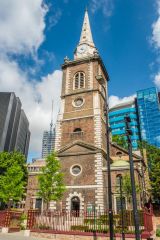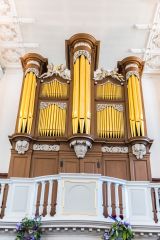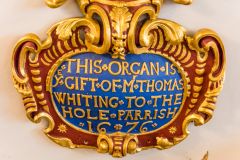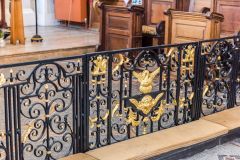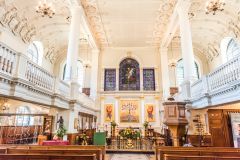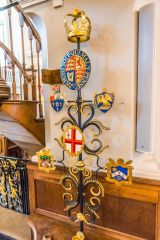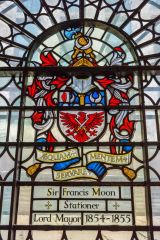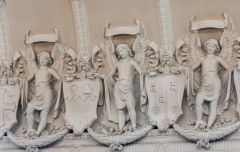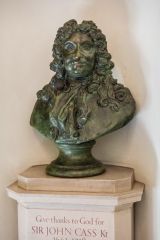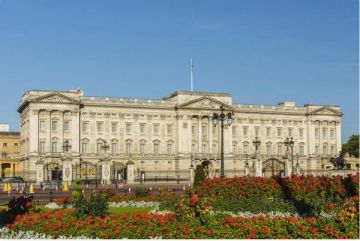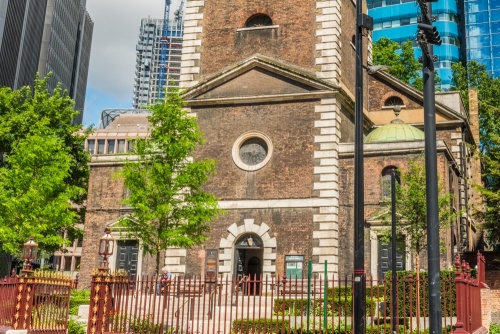
St Botolph without Aldgate is a Georgian church on 11th-century foundations, blessed with excellent stained-glass.
History
There was a church here at least as early as the late Saxon period, but the first written record of a rector comes from 1108. The church was enlarged in 1418 before being completely rebuilt in the 16th century. This church, in turn, lasted only a century before it was declared unsafe and torn down in 1739.
An entirely new church was built, to a design by George Dance the Elder, who is more famous as the architect for Mansion House, the official residence of the Lord Mayor. Dance's elegant Georgian design was remodelled in the late 19th century by JF Bentley, who was responsible for the ornate ceiling and plasterwork detail, and side screens to the chancel.
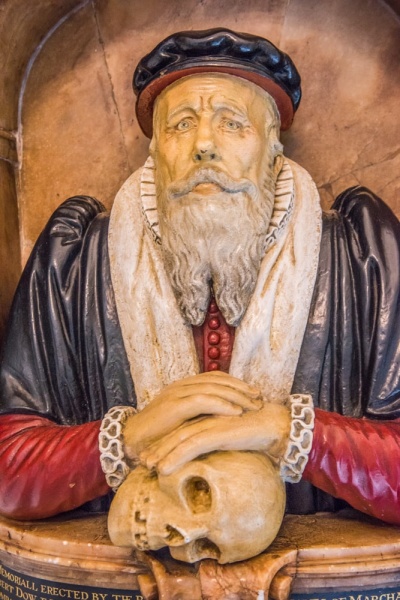
The church had a narrow escape during the Blitz when a bomb fell straight through the roof but failed to explode. The Blitz was an extraordinary period for the Rector of the day, who slept in the Crypt, surrounded by coffins, and climbed onto the roof during air raids to put out incendiary fires.
St Botolph is linked to a number of famous people; author Daniel Defoe was married in the church, and Geoffrey Chaucer lived nearby, in chambers above the gatehouse of Aldgate itself. The poet Edmund Spenser was born in the parish, and Sir Isaac Newton lived opposite the church.
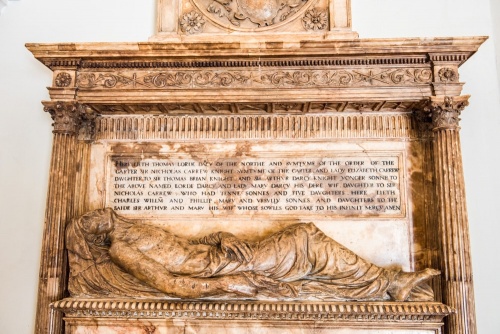
Two controversial Tudor noblemen are buried in the churchyard; Sir Nicholas Carew and Thomas, Lord Darcy were executed by Henry VIII for their involvement in planning a rebellion. An alabaster monument to the two men is set on the baptistry wall.
Another monument in the baptistery is to Sir John Cass, who founded a school in the churchyard in 1710. The school has become the Sir John Cass Foundation, which works with young people across London.
The most colourful memorial is a painted wall monument to Robert Dow, Master of the Merchant Tailors Guild. Dow died in 1612 but the monument was only erected in 1675. It was not paid for by his relatives but by the Worshipful Company of Merchant Tailors.
And on the subject of colourful - look for the gilded and painted plaque commemorating the gift of the organ by Thomas Whiting in 1676. A modern stained glass window acts as a memorial to Sir Samuel Cutler, Lord Mayor of London from 1942-43. Cutler is not the only Lord Mayor remembered at St Botolph's; another stained glass window commemorates Sir Francis Moon, Lord Mayor from 1854-55.
Other highlights include a plasterwork frieze of angels holding heraldic shields running around the nave at gallery window height. There is a superb ironwork screen separating the nave from the chancel, and a richly decorated Lord Mayor's sword rest.
Getting There
St Botolph's is extremely easy to reach. It stands almost imediately beside Aldgate underground station (Circle Line). Just exit the station, turn right, and you will see the church in front of you.
About St Botolph without Aldgate
Address: Aldgate High Street,
London,
Greater London,
England, EC3N 1AB
Attraction Type: Historic Church
Website: St Botolph without Aldgate
Location
map
OS: TQ335812
Photo Credit: David Ross and Britain Express
Nearest station: ![]() Aldgate - 0 miles (straight line) - Zone: 1
Aldgate - 0 miles (straight line) - Zone: 1
HERITAGE
 We've 'tagged' this attraction information to help you find related historic attractions and learn more about major time periods mentioned.
We've 'tagged' this attraction information to help you find related historic attractions and learn more about major time periods mentioned.
Historic Time Periods:
Find other attractions tagged with:
11th century (Time Period) - 16th century (Time Period) - 19th century (Time Period) - Decorated (Architecture) - Georgian (Time Period) - Henry VIII (Person) - Saxon (Time Period) - Tudor (Time Period) -
NEARBY HISTORIC ATTRACTIONS
Heritage Rated from 1- 5 (low to exceptional) on historic interest
St Andrew Undershaft - 0.2 miles (Historic Church) ![]()
St Olave, Hart Street - 0.3 miles (Historic Church) ![]()
Raven Row Gallery - 0.3 miles (Museum) ![]()
All Hallows Staining - 0.3 miles (Historic Church) ![]()
Leadenhall Market - 0.3 miles (Historic Building) ![]()
All Hallows-by-the-Tower - 0.3 miles (Historic Church) ![]()
All Hallows London Wall - 0.4 miles (Historic Church) ![]()
Tower of London - 0.4 miles (Castle) ![]()
Nearest Holiday Cottages to St Botolph without Aldgate:
Leaves Green, Greater London
Sleeps: 6
Stay from: £871 - 3614
More self catering near St Botolph without Aldgate
